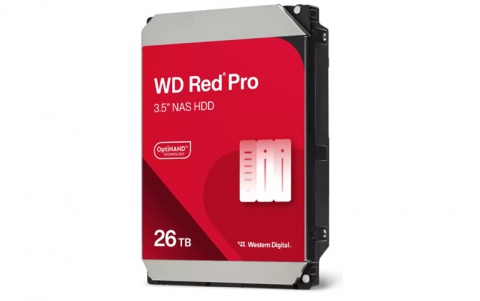
Personal video will drive home PC, recordable DVD sales
At the Independent Software Vendors (ISV) meeting hosted by the Recordable DVD Council (RDVDC) Monday, attendees learned that camcorder household penetration, the driving force for consumer recordable DVD sales, is approaching 40 percent!
The RDVDC, a coalition of nearly 95 leading DVD technology developers and users, held the information exchange at Jacob K. Javits Convention Center in New York City the day before the opening of TECHXNY/PC Expo. The half-day meeting included technology discussions on all of the DVD Forum Recordable DVD formats - DVD-RAM, DVD-R, DVD-RW and applications for consumers and businesses
that ranged from A/V entertainment to computer data.
To emphasize the key reasons DVD video recording is becoming mainstream, members of the RDVDC demonstrated the smooth transfer of video from a camcorder to a personal computer equipped with a recordable DVD drive. After showing how even a first-time user can edit a video, the compatibility of the recorded video was illustrated by playing it back on a range of DVD drives and players.
RDVDC chairman Bon-Guk Koo, senior corporate advisor and former executive vice president of Samsung Electronics, predicted that the consumer interest in personal video publishing will drive increased sales of home PCs with higher processing power during the next two years.
"The new generation of DVD Forum-compliant combination DVD drives, low-cost write-once DVD media and easy-to-use video production software is creating a rapidly expanding consumer market," Koo commented. "People want to preserve their aging home video collection on DVD media. They want to create personalized family and business movies that are as good as those they see on the big screen. Forum-standard drives that have both write-once, play-anywhere and rewritable capabilities are now available for less than $400 and the price for two-hour DVD-R media has dropped significantly. All of the components are available and affordable."
Wolfgang Schlichting, research manager for IDC's Optical Removable Storage Program, reinforced Koo's message by presenting highlights from IDC's recently completed consumer and storage market research studies. The IDC report projected that while in 2003, ten percent of home computers will incorporate recordable DVD drives; by 2006, more than 35 percent of the systems sold will be video publishing-enabled.
These systems, as well as the growing array of external recordable DVD drives will stimulate an increase from more than 3 million recordable DVD drives shipped this year to nearly 50 million in 2006.
Schlichting pointed out that PC manufacturers such as Apple, Sony and Compaq are driving DVD recording into the mainstream. He added that because many people will choose to upgrade existing systems, rather than buy new high-performance PCs, there are significant aftermarket sales opportunities for external recordable DVD drive providers.
"The high-end home PC segment will lead the DVD burner adoption," Schlichting said. "The DVD burner market will benefit from the home PC recovery and the need for new features," he added.
"While home video editing and DVD recording show the highest interest level for DVD recorders, IDC's recently completed end-user survey indicates that there is also consumer demand for DVD recorders that people can use to timeshift and archive TV shows," Schlichting noted.
To emphasize the key reasons DVD video recording is becoming mainstream, members of the RDVDC demonstrated the smooth transfer of video from a camcorder to a personal computer equipped with a recordable DVD drive. After showing how even a first-time user can edit a video, the compatibility of the recorded video was illustrated by playing it back on a range of DVD drives and players.
RDVDC chairman Bon-Guk Koo, senior corporate advisor and former executive vice president of Samsung Electronics, predicted that the consumer interest in personal video publishing will drive increased sales of home PCs with higher processing power during the next two years.
"The new generation of DVD Forum-compliant combination DVD drives, low-cost write-once DVD media and easy-to-use video production software is creating a rapidly expanding consumer market," Koo commented. "People want to preserve their aging home video collection on DVD media. They want to create personalized family and business movies that are as good as those they see on the big screen. Forum-standard drives that have both write-once, play-anywhere and rewritable capabilities are now available for less than $400 and the price for two-hour DVD-R media has dropped significantly. All of the components are available and affordable."
Wolfgang Schlichting, research manager for IDC's Optical Removable Storage Program, reinforced Koo's message by presenting highlights from IDC's recently completed consumer and storage market research studies. The IDC report projected that while in 2003, ten percent of home computers will incorporate recordable DVD drives; by 2006, more than 35 percent of the systems sold will be video publishing-enabled.
These systems, as well as the growing array of external recordable DVD drives will stimulate an increase from more than 3 million recordable DVD drives shipped this year to nearly 50 million in 2006.
Schlichting pointed out that PC manufacturers such as Apple, Sony and Compaq are driving DVD recording into the mainstream. He added that because many people will choose to upgrade existing systems, rather than buy new high-performance PCs, there are significant aftermarket sales opportunities for external recordable DVD drive providers.
"The high-end home PC segment will lead the DVD burner adoption," Schlichting said. "The DVD burner market will benefit from the home PC recovery and the need for new features," he added.
"While home video editing and DVD recording show the highest interest level for DVD recorders, IDC's recently completed end-user survey indicates that there is also consumer demand for DVD recorders that people can use to timeshift and archive TV shows," Schlichting noted.














